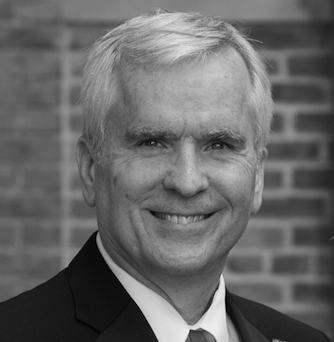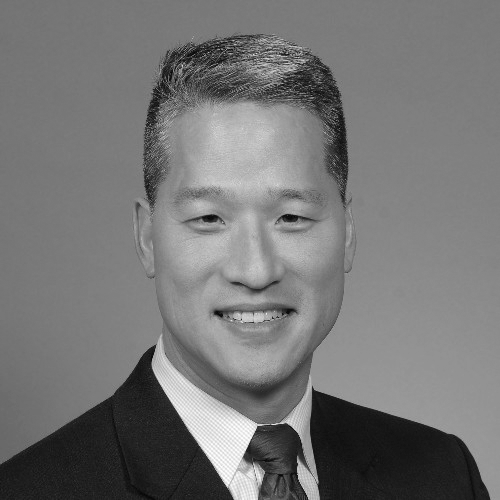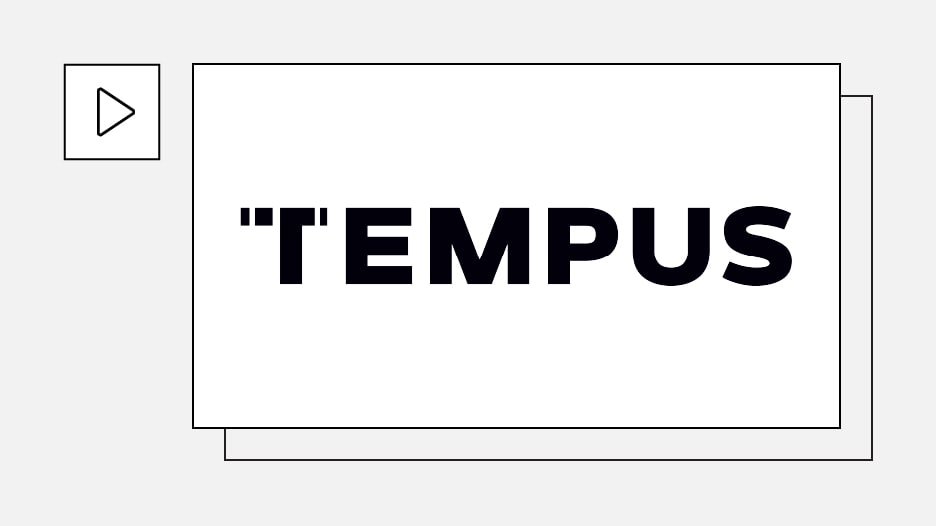-
PROVIDERS
Watch now
Are you getting the full picture? A webinar series on the power of comprehensive intelligent diagnostics
-
LIFE SCIENCES
REGISTER NOW
Closing Care Gaps with AI: The Next Competitive Edge in Pharma
Monday, July 14
9am PT, 11am CT, 12pm ET -
PATIENTS
It's About Time
View the Tempus vision.
- RESOURCES
-
ABOUT US
View Job Postings
We’re looking for people who can change the world.
- INVESTORS
07/19/2023
Accelerating patient enrollment with just-in-time trials: TriHealth on the TIME program
The traditional model of activating clinical trials is widely acknowledged as inefficient. The process of establishing a clinical site, negotiating partnerships between sites and sponsors, then attempting to recruit eligible patients in nearby areas can take many months, and it becomes a burden to trial site staff, sponsors, and patients.
Authors
Amy Gordon Franzen
SVP, Trials Business, Tempus

James F Maher, MD
Oncologist, TriHealth

Jason Claes, MBA, MSM, GRCRA
Clinical Research Manager, TriHealth

SVP, Trials Business, Tempus

James F Maher, MD
Oncologist, TriHealth

Jason Claes, MBA, MSM, GRCRA
Clinical Research Manager, TriHealth

To combat challenges with trial activation, Tempus developed the TIME program, to bring the right trials to the right patients at the right time. TIME is a just-in-time trial network that leverages data, technology, and a network of site partners to accelerate patient enrollment and open trials in about 10 business days.
During a recent webinar, Amy Gordon Franzen, SVP, Trials Business at Tempus, hosted a fireside chat with two leaders from TriHealth, an integrated health system in Ohio and one of the 70+ sites in the TIME network. James Maher, MD, Medical Oncologist, and Jason Claes, Clinical Research Manager, shared how they collaborate with Tempus to rapidly activate oncology trials that fit their needs and capabilities.
Below, we’ve summarized key takeaways from the discussion with the five benefits a just-in-time structure provides to sites like TriHealth – as well as sponsors and patients – when activating new clinical trial programs in oncology. To learn more, watch the webinar recording here.
1. Enroll patients efficiently by using data and technology to meet targets
“We joined the TIME network because we needed a way to bring trials to patients in the real world,” Dr. Maher said. Rather than opening trial sites and waiting for patients to enroll, the TIME approach uses data and technology to pre-screen patients and build “watch lists” based on which patients may soon or already match trial inclusion/exclusion criteria.
To build the enrollment watch lists, Tempus applies artificial intelligence and machine learning on top of data – both from the hospitals’ own electronic medical record (EMR) data and the Tempus multimodal database. This may include patients sequenced using a Tempus test, or those who were sequenced elsewhere. “We are then able to use natural language processing and many other data and technology services to find patients that are likely to be a match,” Franzen said. A centralized team of nurses at Tempus also reviews patients’ charts to confirm their eligibility. The names of patients who appear eligible are sent to their care teams for further review, and care teams can discuss trial options with patients who appear to meet eligibility criteria.
Clinical research staff can then work with Tempus to determine the right moment to launch a trial and begin enrolling participants. This is a particularly helpful approach to streamlining patient enrollment for resource-strapped centers, who, as Dr. Maher explained, often find it more difficult to enroll patients than large academic medical centers do.
“As a small, community hospital system, we don’t have the bandwidth or resources to open trials for one patient,” Claes said. “Tempus can help us identify patients that meet specific inclusion/exclusion criteria, and our trial team can ensure we’re able to meet our target enrollment for the studies we’d like to run.”
2. Enroll patients efficiently by using data and technology to meet targets
Claes shared that, as a clinical trial administrator, contracting between trial sites and trial sponsors is one of his biggest pain points. “It’s always the contract that is sluggish,” Claes said.
To improve efficiency, the TIME network establishes a standard set of contracts, rate cards, and centralized IRBs before the trial starts that enable rapid site activation. Franzen also spoke about the “activation form” that TIME uses, which allows agreements between sites and sponsors to move forward for quick signature while beginning study startup activities. “By doing these processes in tandem, everything is streamlined,” she said.
“Utilizing the TIME program has enabled continuity when opening a trial, and what used to take six to nine months to negotiate for a trial now takes one week,” Claes said. “We use standardized language with our partners, the budget is already negotiated, and the contract has been streamlined prior to opening the study, with template language that has been agreed upon by TriHealth and the sponsor.”
3. Identify site or trial partners that match your needs and capabilities
When assessing partners for clinical trials, sites and sponsors must navigate their requirements and capabilities carefully. Does a site offer the right facilities to accommodate all of the procedures necessary for a trial? Does a sponsor’s requirements align with a site’s policies? TIME ensures transparency between sites and sponsors to forge effective partnerships, in less time than may have taken in the past to discuss and align on needs and expectations.
“The very first thing we do when a trial joins the TIME network is map that trial’s needs against our sites’ capabilities,” Franzen said. “Depending on the characteristics of a trial – first-in-human trials are covered by a smaller group of sites, for example – a wider or more limited basket of trials becomes available.”
TriHealth, Dr. Maher shared, has developed capabilities in acute leukemia treatment that attracted CAR-T experts from local academic institutions to participate in their trials. “We started off doing more straightforward trials, but now we’ve developed the experience to partner on more complex studies with these kinds of partners,” he said.
The TIME network includes over 75 institutions across the US, in almost all major metropolitan and many rural areas, and over 50 available trials. This scale, Franzen said, empowers clinical trial teams with choice as they select the right partner for their program.
4. Support trial operations and relationships between sponsors and trial site teams
While access to a large network of potential trial partners enables strong matches, it can also be daunting or resource-intensive for sites to navigate on their own, particularly given the challenges of hiring on-site clinical research coordinators. TIME offers sites clinical research coordinators (CRCs) to help in identifying patients who appear to meet eligibility criteria and to serve as study personnel for studies that are opened at the site. Sites pay Tempus for the time the CRC spends serving as study personnel on their trials.
“A just-in-time network is wonderful, because it gives you very efficient access to a diverse bundle of trials. The challenge, though, is that because most trials are not yet open, there is limited budget to fund a team to pre-screen patients and do other pre-work to assess the feasibility of opening a trial,” Franzen said. “Tempus is able to provide that screening support, which benefits the TIME program.”
This Tempus resource can enhance a trial team’s existing capabilities. “The Tempus resource worked together with our Precision Medicine Institute, which helped us to accelerate pre-screening and eventually match patients for trials of targeted agents,” Dr. Maher said.
Claes expanded further on the value of this colleague embedded into their team: “Having a Tempus CRC embedded with and integrated with my team means they understand the operations and nuances of how we open up and maintain a trial. They’re even part of implementing and managing the trial itself.”
5. Accelerate oncology trial activation to provide more options to patients
Dr. Maher provided a specific example of a trial that TIME supported at TriHealth.
“I’m always asking what I can do for the patient, so I’m always looking at the list of trials available to us through the TIME network,” Dr. Maher said. When a patient with prostate cancer came into his care, he sought a treatment option between the patient’s current regimen and a more advanced therapy. He and his team identified a trial for a bispecific antibody treatment, and found that the patient was a match.
“That trial was opened in about two weeks, from identifying the patient to getting him on his first treatment,” Dr. Maher said.
He cited the Tempus CRC as a key resource for this rapid activation: “The Tempus CRC was invaluable, particularly on the pre-screen; the patient was identified right when he had progression, and it was the perfect time to move ahead with the trial.”
Looking ahead: The future of precision oncology
Since the launch of TIME, Tempus has matched over 20,000 patients to trials and welcomed hundreds of provider networks, research sites, and biopharma leaders to the program. As the TIME model evolves and we continue to realize the promise of precision oncology, Dr. Maher expects to see CAR-T and immune effector cell therapies emerge earlier in the trial process.
With over 220 trial activations completed and nearly 800 patients consented to participating in trials, Franzen shared that this is just the beginning for TIME’s impact on precision oncology.
“Together as an industry, we have a tremendous amount of room to grow and use data, AI, and people to challenge norms and increase the rate of enrollment in clinical trials, especially at hospitals like TriHealth,” Franzen said.
If you have questions about how the TIME program can help you accelerate trial activation, please contact the Tempus team here.
-
07/01/2025
Transforming R&D with Generative AI and Real-World Data
Mike Yasiejko, General Manager and Executive Vice President at Tempus, recently spoke with Andrew Mazar, PhD, Chief Operating Officer at Actuate Therapeutics, about the ways Tempus’ liquid biopsy (xF+) and methylation assays have been valuable to Actuate’s work and how the company has benefitted from the partnership
Watch now -
06/12/2025
AI & ML in action: Demonstrating real-world impact in trial design & patient care
Discover how the Tempus platform leverages AI and ML to inform standard of care practices through health equity guidelines and drive insights that help refine clinical trial design. Engage with live demonstrations showcasing how our tools identify patients by modifying inclusion/exclusion criteria and leveraging patient queries. Explore how our tools integrate NCCN guidelines and empower life science teams to access current, actionable patient-journey insights. Learn how these real-world applications can drive progress in your clinical development initiatives.
Watch replay
Secure your recording now. -
06/09/2025
Bridging the translational gap: The role of organoids in oncology R&D
This white paper explores the evolving role of organoids in oncology R&D, highlighting their potential as predictive preclinical models and their ability to reduce translational risk. Download for a comprehensive overview of the scientific landscape, key adoption barriers, emerging innovations, and how pharma companies leverage organoids to accelerate precision medicine.
Read more


